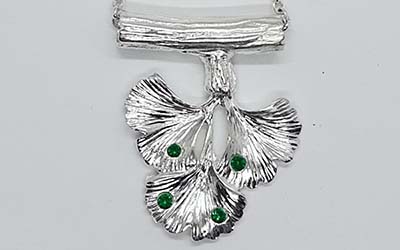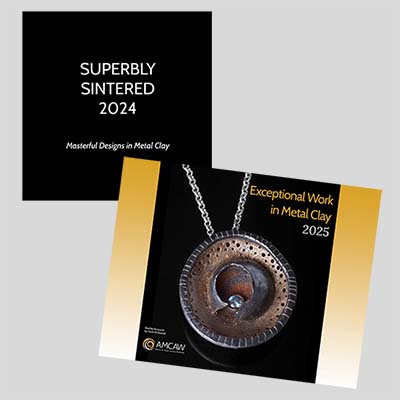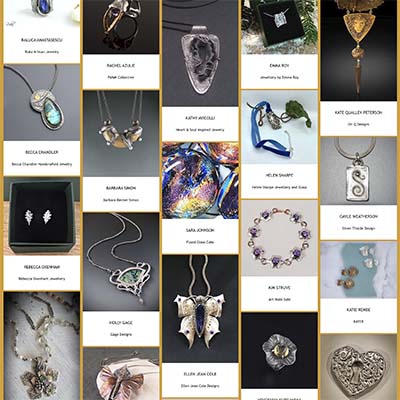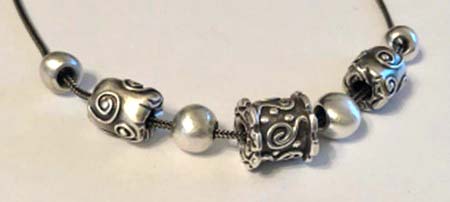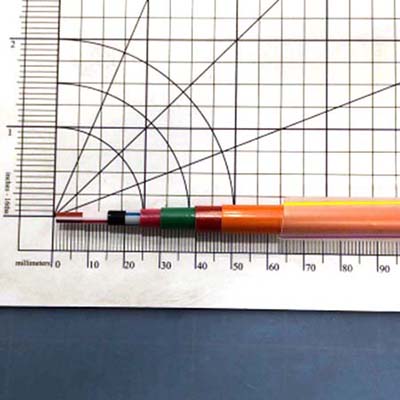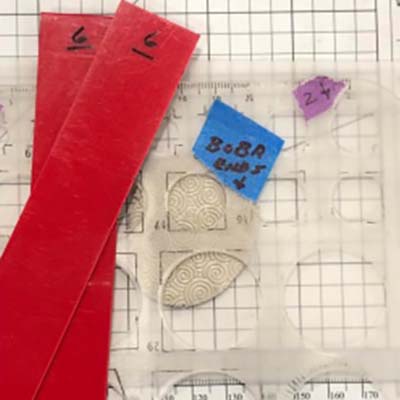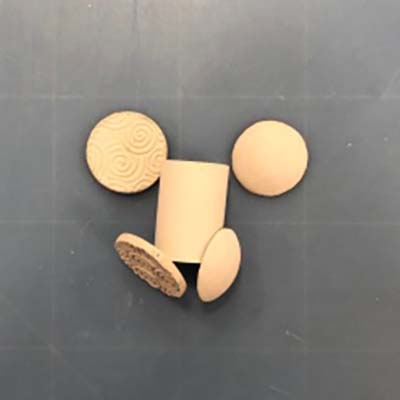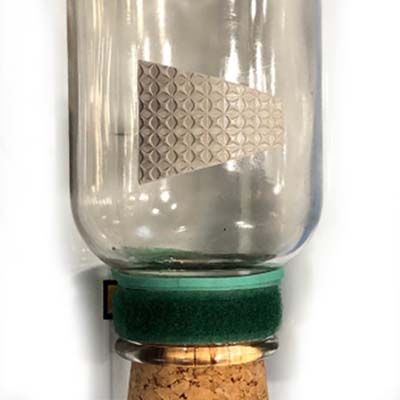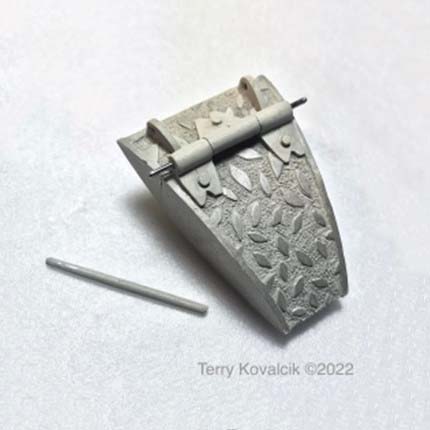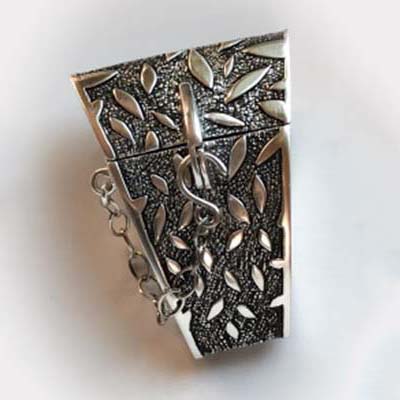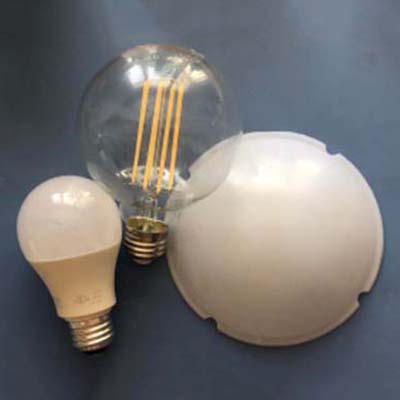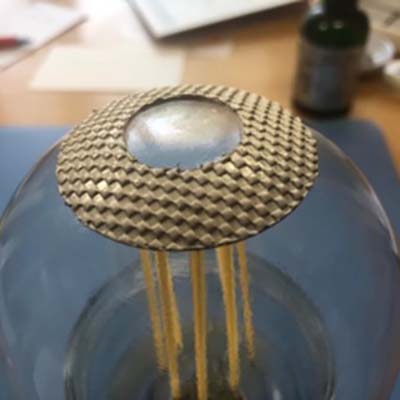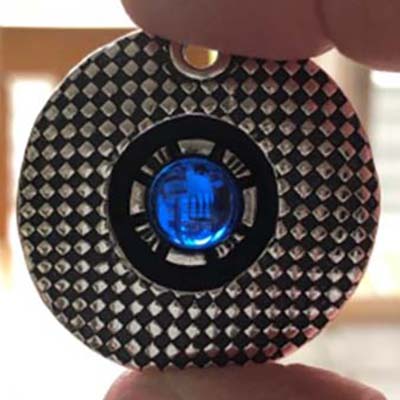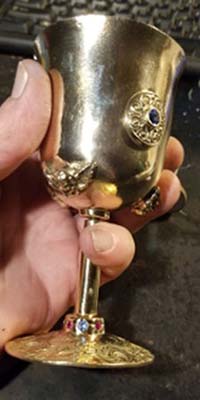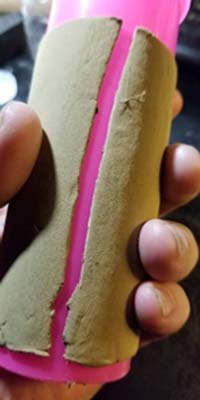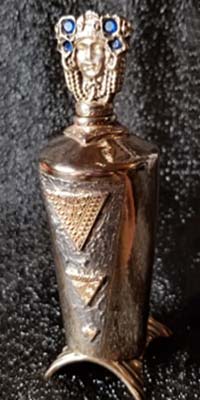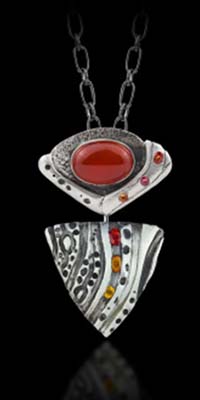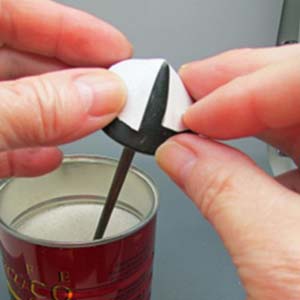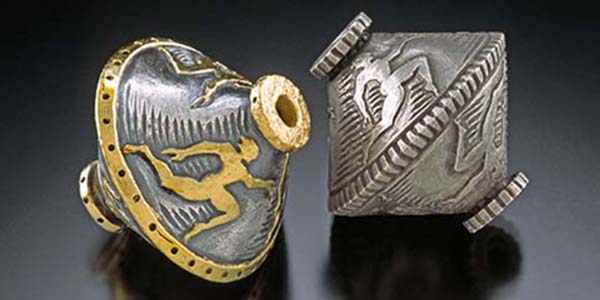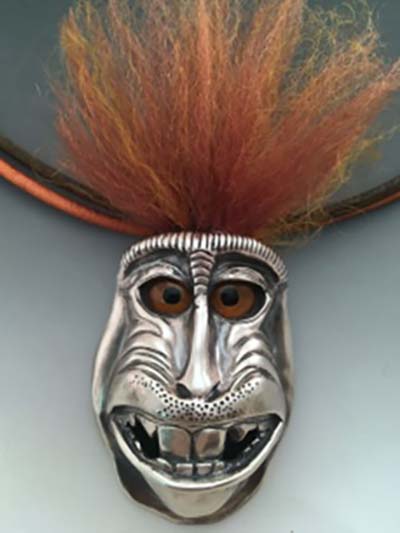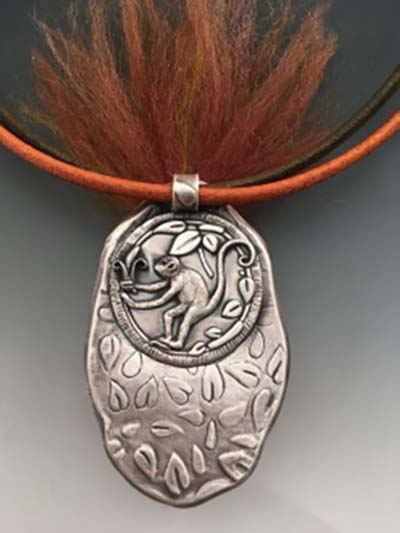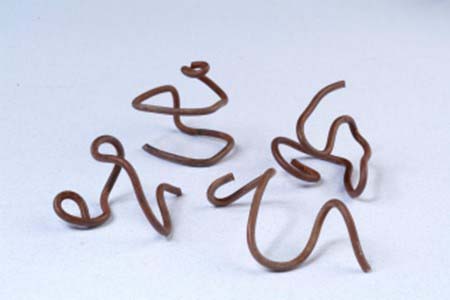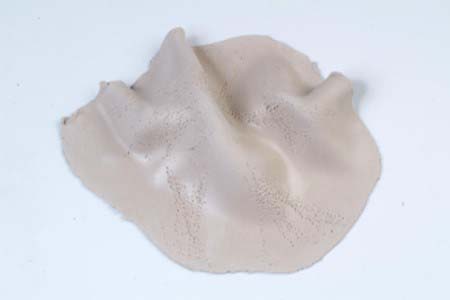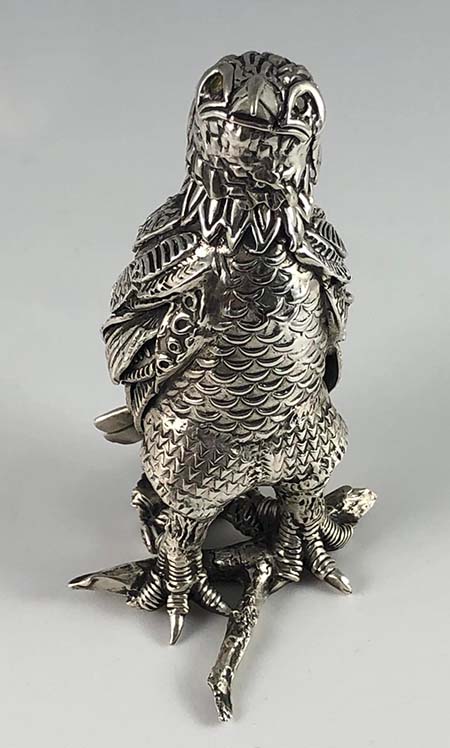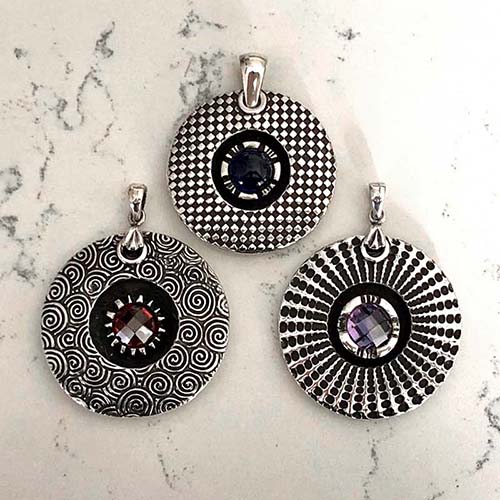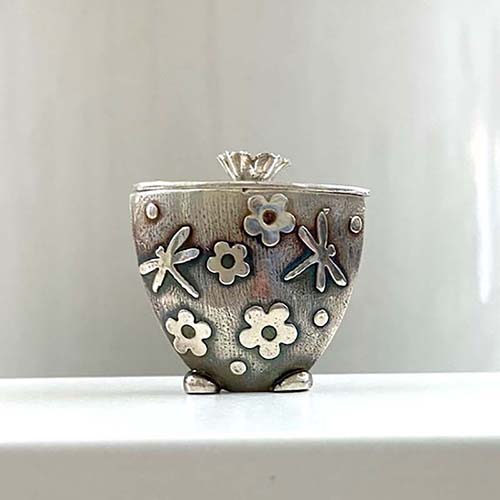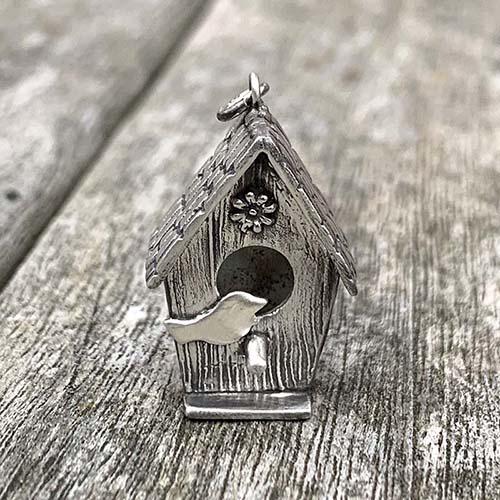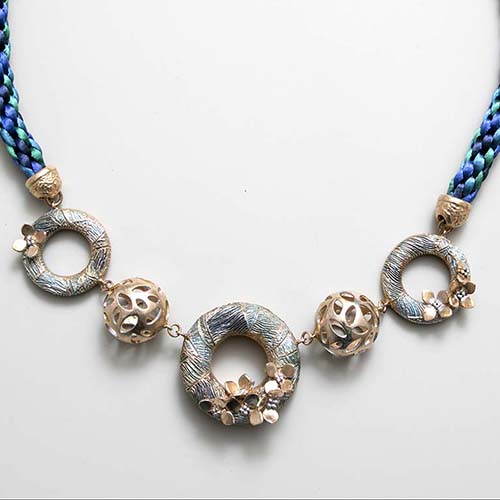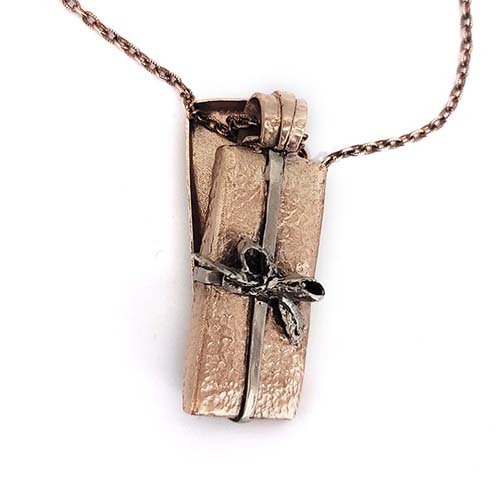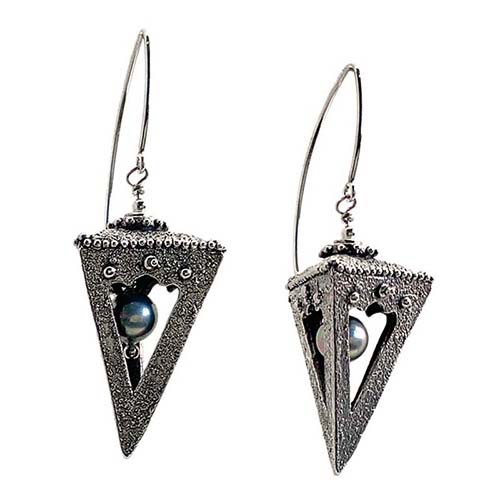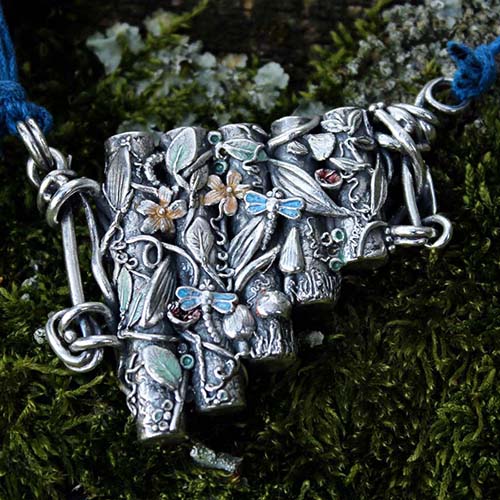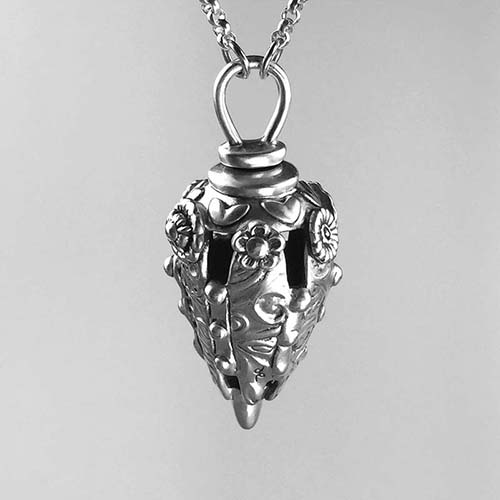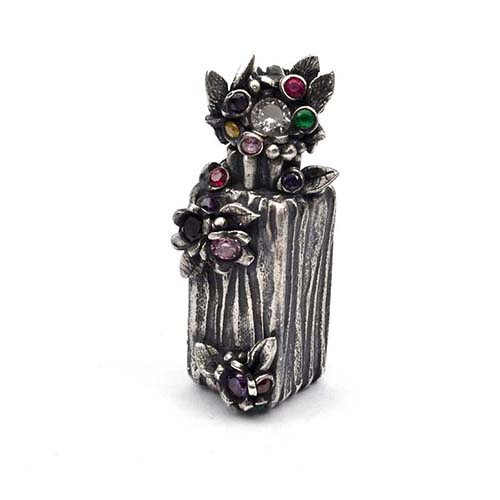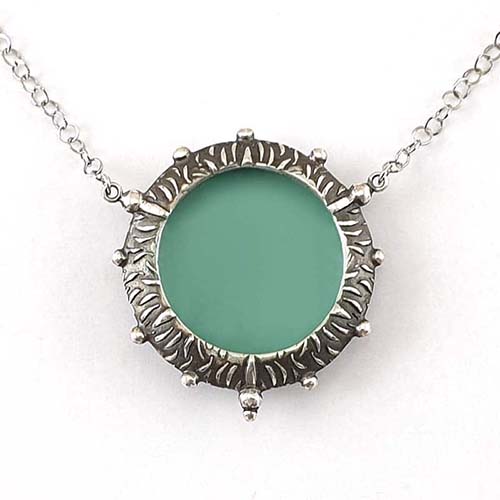What are we referring to when we talk about ‘burnout’ and metal clay? Burnout refers to the choice to design with a combustible material inside a piece with the intention of having that material burn away in the kiln during firing. The burnout material supports the metal clay during the forming and greenware process but is not part of the finished piece.
Materials that are commonly used for burnout are cork clay, wood clay, paper, dried pods, dried twigs, dried acorns, dried pasta, cereal, cookies, anything that can burn safely and leave little or no residue. NOTE: the word dried appears regularly in this list. It is essential that the material that you use for burnout is absolutely devoid of any moisture. Trapped moisture creates steam in the kiln, creating extreme forces of pressure inside your piece. This pressure can cause a piece to distort or even explode in the kiln.
The glory of using burnout material is that you can size and shape it exactly as you wish. The photos here depict the artist’s journey to create a whimsical young eagle using cork clay as a support structure.
The challenge of using burnout material with metal clay is two-fold. As previously mentioned, the material must be absolutely bone dry prior to covering it with metal clay. Secondly, the burnout material must be allowed to completely combust in the kiln PRIOR TO SINTERING. This is crucial and involves incorporating a lower-temperature burnout step in your firing schedule.
Ideally, you slowly ramp (800°F/425°C ramp) the kiln temperature to a burnout temperature of no more than 800°F/425°C. Hold at that temperature for at least 30-minutes to ensure complete combustion of the burnout material, then ramp up to sintering temperature. If the lower-temperature burnout step is skipped and the kiln is allowed to heat up at full ramp, the heat of combustion added to the quickly ramping kiln temperature can cause two problems:-
- the metal clay may experience so much heat during combustion that it begins to melt, and
- sintering and shrinkage may begin to occur before the burnout element is completely gone, resulting in cracks and potential distortion of your piece.
Torch-firing or hob-firing a three-dimensional piece containing burnout material is NOT a safe option. Note that burnout material generally leaves an ash residue behind. This is normal. The ash can usually be removed after firing if holes or openings are designed into your piece.


